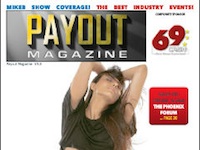Getting the Most from Publicity: The ‘Do’ List
 YNOT – Admittedly, writing effective press releases is more art than science, but some common best practices can help you get attention for your message. By the same token, making some common mistakes can harm not only your chances of seeing your message in print, but also your company’s public image.
YNOT – Admittedly, writing effective press releases is more art than science, but some common best practices can help you get attention for your message. By the same token, making some common mistakes can harm not only your chances of seeing your message in print, but also your company’s public image.
Here’s a list of tips to keep in mind when creating press releases. The list isn’t exhaustive, but it provides a good starting point.
Do:
Start strong. Ensure your headline and opening not only grab attention, but also deliver the most important details. Use the remainder of the space on the page to provide supporting information. Remember: You have only seconds to capture a writer’s or editor’s interest.
Provide contact information. No matter how enchanting the rest of the press release, if you forget to tell readers how to get in touch, you’ve wasted your time. Make sure to include a website address as well as a physical address and phone number, if applicable. It’s always a good idea to include a point of contact for media types, as well, in case they want more information.
Stick to the facts. Hyperbole (hype), slang and excessive exclamation points do nothing to elevate anyone’s impression of your business. In fact, just the opposite often is true: Too much overblown verbiage or “marketing speak” can damage your credibility. Stretching the truth is even worse. Do yourself and your audience a favor and tell the truth, without the fluff.
Limit jargon and abbreviations. Not everyone is familiar with your industry’s unique language. At best, abbreviations and jargon can be confusing. At worst, they may have other meanings of which you are unaware. Use easy-to-understand, plain language and spell out all acronyms the first time they appear.
Be informative. Ask yourself whether the information you’re disseminating in the release offers value to someone outside your company. Are you giving readers something they can use, or are you merely looking for a chance to “get your name out there?” Never hesitate to tout reaching a milestone, celebrating an anniversary, hiring a new staff member or promoting an old one, experiencing significant growth or winning awards, but when considering any other type of press release, make sure to answer the question “Why should anyone care?”
Be timely. If specific dates and times are attached to the subject of the release, make sure to incorporate that information. You’ll increase your chances of seeing your news published if you give media outlets at least a week before an event takes place. Most reporters and editors deal with tens, if not hundreds, of press releases daily, and even the healthiest print publications and websites have limited space with which to work. The more lead time you can give them, the better your chances of seeing your message in print.
Include a “hook.” In the media biz, a “hook” is something interesting and relevant on which a reporter can hang a story. Try hanging your news on an uncommon benefit to the audience, current events, social issues or a recent study or trend.
Offer images. Including an image with your press release can make the difference between publication and obscurity, especially online. The web is a visual medium, and most online media outlets run at least one image with every story. If finding an image to go with your news represents a big investment of time or energy, a publication may pass on the story. In the adult industry, it pays to offer both “clean” and “titillating” images, because not all news websites will publish explicit materials.
Proofread. Although most media professionals will overlook occasional typos, it doesn’t hurt to double-check spelling and punctuation. The old cliché is based in fact: You only get one chance to make a good first impression.
Next: the don’t list.










